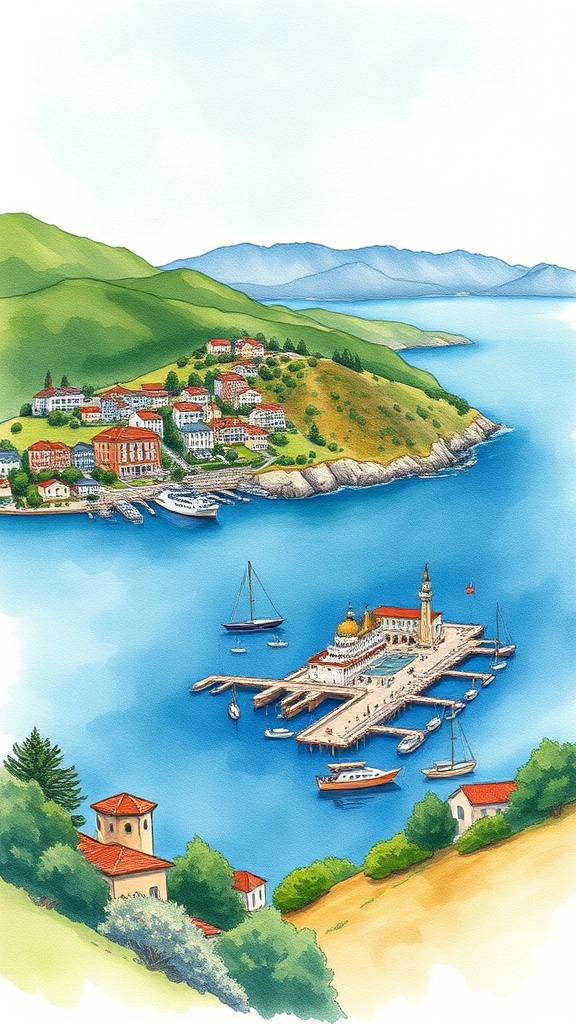Marin County: Balancing Wild Spaces, Water, and Community

Marin County remains a magnet for outdoor lovers, food enthusiasts, and conservation-minded communities. With sweeping coastal cliffs, ancient redwood groves, and rolling dairy pastures, Marin blends spectacular public lands with small-town character. That mix brings growing interest—and growing responsibility—around how residents and visitors use and protect the landscape.
Why Marin matters
Marin is home to some of the Bay Area’s most visited natural attractions, including coastal headlands, the redwood canopies of Muir Woods, and the expansive Point Reyes National Seashore.
These public lands support biodiversity, provide public access to nature, and anchor local agriculture and tourism economies. At the same time, rising environmental pressures—coastal erosion, changing fire regimes, and habitat fragmentation—have pushed local governments, land trusts, and community groups to coordinate adaptive strategies.
Outdoor tips that protect the landscape
– Plan ahead: Check park websites or local ranger stations for trail conditions, closures, and parking restrictions. Popular trailheads fill early on weekends.
– Practice trail etiquette: Yield to uphill hikers and equestrians, keep dogs leashed where required, and pack out everything you bring in.
– Stay on marked paths: Sensitive habitats such as dunes and wetlands recover slowly once trampled. Off-trail shortcuts erode slopes and disrupt nesting birds.
– Be tide-aware: Point Reyes and other intertidal areas can have strong rip currents and fast-rising tides. Know safe exit points and avoid cliffside scrambling.
Community approaches to resilience
Local agencies and nonprofits are investing in nature-based solutions—restoring wetlands to buffer storm surge, enhancing creek corridors to improve flood resilience, and managing vegetation to reduce wildfire risk. Land trusts continue to secure working farms and open space through easements, preserving the agricultural character of Marin’s valleys while maintaining wildlife corridors.
Sustainable travel and access
Public transit, bike routes, and shuttle services expand access to popular parks while reducing road congestion.
For day visitors, carpooling or using regional transit options helps minimize parking pressure in small communities. Many towns have boosted downtown amenities—farmstands, cafes, and bike rentals—so visitors can enjoy a low-impact, locally focused experience.
Food, farms, and local economy
Marin’s agricultural sector remains a vibrant part of county life. Small-scale dairies, organic farms, and farmers markets keep a strong farm-to-table culture. Supporting local producers—by buying at a market, dining at a farm-centric restaurant, or joining a CSA—helps sustain farmland protection efforts and reinforces regional food resilience.
Wildfire and personal preparedness
Vegetation management, defensible-space guidelines, and community emergency plans are central to reducing wildfire risk.
Homeowners can make impactful changes by using fire-resistant landscaping, clearing gutters, and keeping access clear for emergency vehicles. Neighborhood preparedness teams often provide practical workshops on evacuation planning and home hardening.
Enjoy responsibly
Marin’s combination of natural beauty and community vitality depends on mindful stewardship. Whether you’re hiking an old-growth redwood trail, watching tule elk on the coastal plain, or sampling cheese at a farmstand, small choices add up: respect wildlife, stay on trails, reduce waste, and support local conservation efforts.
That approach helps ensure Marin’s landscapes remain accessible, resilient, and thriving for everyone who comes to experience them.